Biography
Steve McCurry is a celebrated American photojournalist. The photographer is known for his masterpieces. McCurry was “born on 24th February 1950 in the state of Pennsylvania” (Steve McCurry, 2015, para. 2). Steve McCurry graduated with a degree of arts from Penn State University in 1974. He worked for The Daily Collegian as a photographer after completing his studies. He later joined Today Newspaper as a photojournalist. McCurry later decided to become a freelancer in India. He later travelled to Afghanistan where his career begun. He is presently known for his courage and strength (Steve McCurry, 2015).
McCurry has covered many conflicts in different parts of the world such as Lebanon, Iran, Iraq, and Cambodia. Most of his photos have been featured in different magazines across the world. He joined Magnum Photos in the 1980s. Most of his works are featured in different publications such as the National Geographic. McCurry has also received numerous awards for his achievements. Ryan and Conover (2004) believe that “the photojournalist focuses mainly on the human consequences of war” (p. 46). This approach has revealed the impacts of war on the lives of many people across the globe. McCurry’s photographs focus on both human pain and joy. This fact explains why McCurry’s artworks are admired by many people across the globe.
Steve McCurry’s Photographs
Afghan Girl
This is one of the greatest photographs by Steve McCurry. McCurry (2013) states that the “Afghan Girl became famous because it identified the impacts of war on the lives of mankind” (p. 37). Many analysts “have likened McCurry’s Afghan Girl to Leonardo da Vinci’s Mona Lisa” (Ryan & Conover, 2004, p. 36). The girl in the photograph was a refugee in Pakistan. The photojournalist took this outstanding photo in 1984. The Soviet Union had occupied Afghanistan during this period.
The girl in the photograph was later identified as Sharbat Gula. The portrait of the girl symbolized the conflicts encountered by many refugees during the time. The girl’s eyes portray the pains encountered by many women in different refugee camps. The photograph also symbolizes the challenges encountered in many refugee camps across the globe. This photo by McCurry later inspired many artists such as Jodie Bieber.
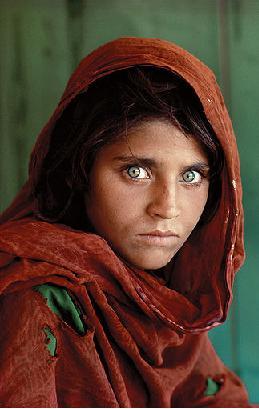
Tailor in Monsoon
The photograph “Tailor in Monsoon” examines the challenges encountered by many people in the developing world. McCurry photographed an elderly tailor who had been caught in the Porbandar monsoon floodwaters. The tailor had to wade through the floodwater despite the debris. The sewing machine in the photograph represents the man’s fate. The old man is trying to secure a future for himself. The photograph “appeared on the cover of the National Geographic magazine” (McCurry, 2013, p. 74). This photograph portrays the pains experienced by many Indian during the period. This artwork encourages more people to focus on their goals despite the challenges affecting them. The “manufacturer of the sewing machine later sent the old man a new one after seeing the photo” (McCurry, 2013, p. 74).
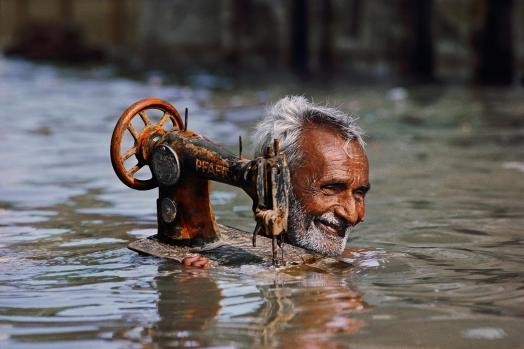
Vrindavan Widow
Steve McCurry photographed the work “Vrindavan Widow” in one of the streets in Vrindavan. According to the photojournalist, the old widow moved around Vrindavan with much hope and courage. The “old widow had lived a lonely life since she was widowed at the age of 13” (McCurry, 2013, p. 62). The widow used to accept coins from different people in the old city. The image of this widow shows sympathy. The ambiguity of this photograph encourages more people to focus on their goals (McCurry, 2013). Every person should acquire powerful ideas from this photograph. People should be ready to overcome every challenge. This kind of perseverance will make it easier for many individuals to achieve their potentials. This fact explains why “Vrindavan Widow” is one of Steve McCurry’s masterpieces.
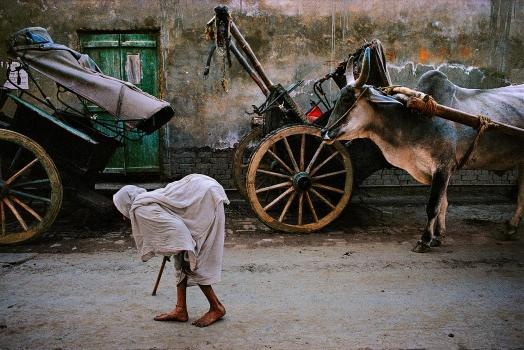
Monk at Jokhang Temple
McCurry had the opportunity to capture the portrait of a monk in Tibet. This photograph showed something unique to the viewer. The face of the monk presented a sense of truth. The face had absorbed many ideas for those years. This ancient feeling presents many lessons to the viewer. The monk appears to have led a life full of optimism. He also “appears to be focusing on the truth” (McCurry, 2013, p. 75). The photo presents a sense of spirituality. The “monk looks into the camera with a thoughtful gaze” (McCurry, 2013, p. 78). The monk presents powerful ideas and spiritual thoughts that can support the lives of many people. The viewer should examine this photograph carefully in order to get the best values. Such values will make it possible for more people to achieve their potentials.
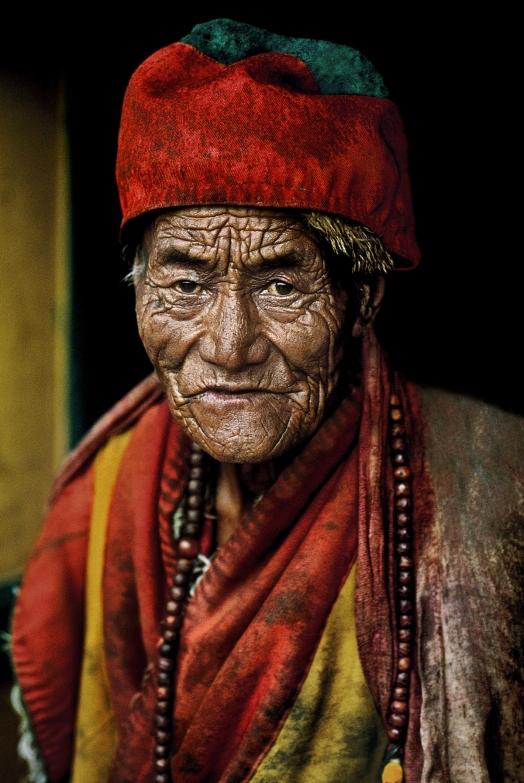
The Temples of Angkor
Steve McCurry visited Angkor in 1989. He managed to visit a number of temples in this old city. McCurry was overwhelmed by these temples. According to the photojournalist, the temples presented the ideologies, beliefs, and expectations of many people in Angkor. The statues had become worn away after many years of degradation. Most of the temples represented the ugly marks of war. Many people had looted most of the statues in these temples. The photograph below is one of the artworks detailing the temples of Angkor. The viewer can get numerous ideas and lessons from these works of art (Ryan & Conover, 2004). The photograph narrates the upheavals encountered by many believers in Angkor and other surrounding regions. McCurry narrates a powerful story using these works of art.
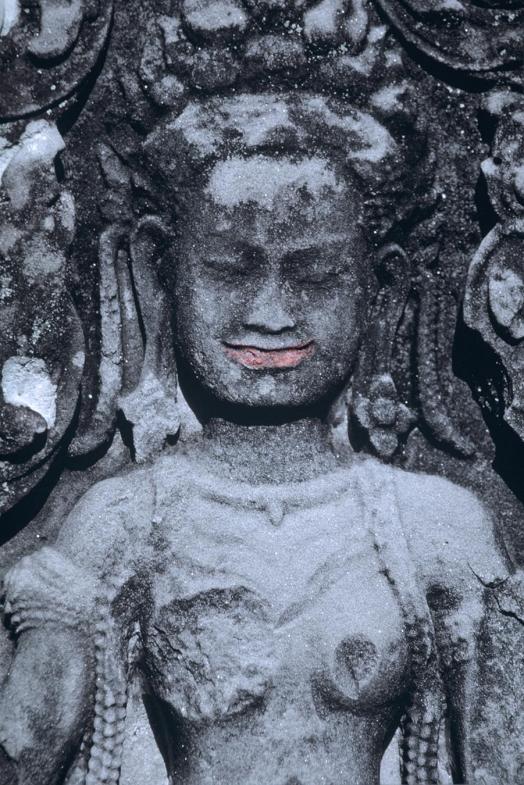
Fishermen
This is one of the masterpieces by Steve McCurry. The photo was taken in 1995. According to the photograph, Sri Lanka is a country associated with different cultural practices. Fishing has been a common economic practice among the people of this country. The photo shows how the fishermen are dedicated to their duties. They appear to overcome the impossibilities that might affect their goals. The fishermen also appear to work hard in order to achieve their goals. McCurry’s photograph goes further to highlight the unique challenges encountered by many individuals in different parts of the world (Ryan & Conover, 2004). That being the case, human beings should be ready to overcome every kind of challenge. The concept of teamwork is also evident in this artwork. People should therefore embrace these ideas in order to achieve their potentials.
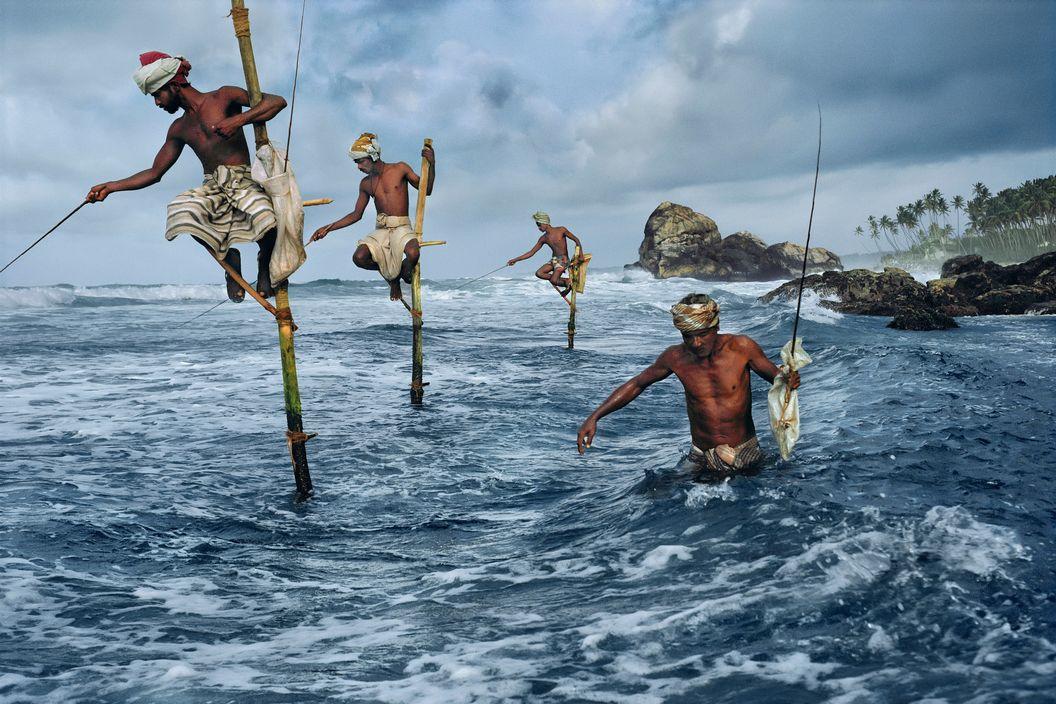
Jodhpur
India is known for its infamous Caste System. India is also characterized by many challenges and obstacles. Many people grow up in pathetic conditions. Insecurity is also a major concern in many parts of the country. The photograph “Jodhpur” describes the challenges encountered in India. The small boy portrayed in this photo appears to have come into terms with the challenges encountered in the society. The dirty walls portray the pains experienced by many people in these back alleys. The “imprints on the wall speak of danger” (McCurry, 2013, p. 102). The red color also symbolizes blood. This fact explains why this work of art has been analyzed by many people across the globe. The photograph also describes most of the challenges experienced by many people in the developing world. McCurry’s photograph encourages every government to support the needs of its people. This approach will make it easier for more people to achieve their goals.
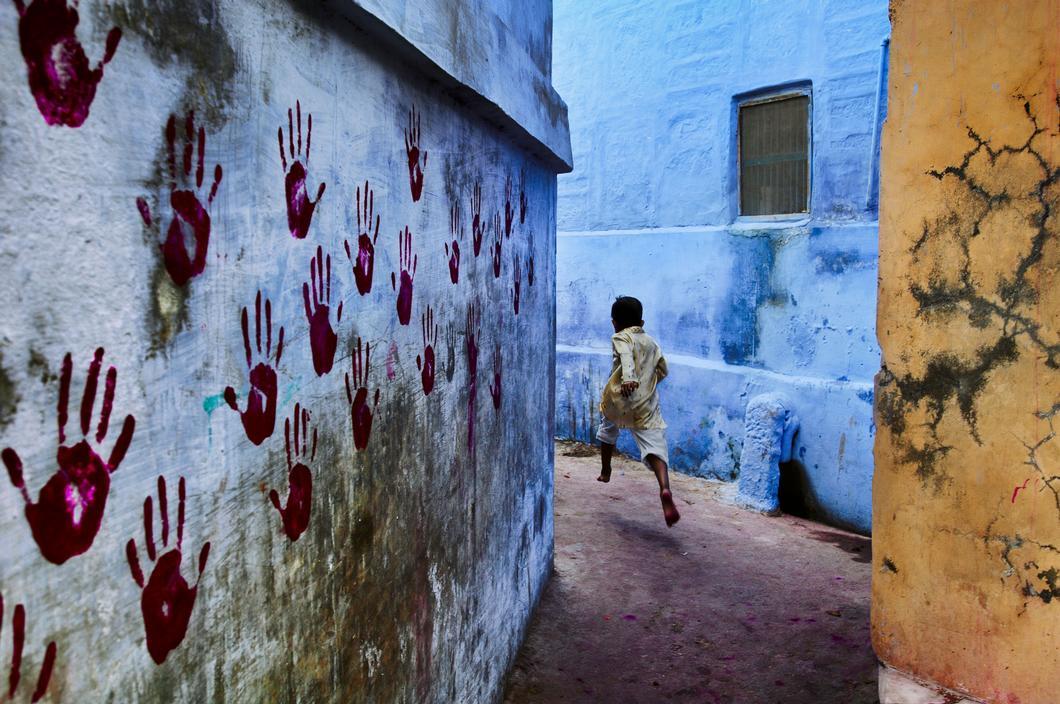
Concluding Remarks
Most of the above artworks give a summary of Steve McCurry’s achievements as a photojournalist. The artist has been focusing on the issues affecting many people in the developing world. The major themes presented in most of his photographs include “poverty, nature, solitude, insecurity, and hard work” (McCurry, 2013, p. 132). This discussion shows how photojournalists can communicate to different individuals using their artworks.
He also has also visited many troubled regions. He also managed to examine the unique pains encountered by many people. Such artworks present powerful lessons that can guide many people in every corner of the world. McCurry encourages his viewers to learn new ideas from these photographs. Such ideas will make it easier for them to achieve their potentials. This practice will also make the world a better place for every person. This fact explains why I will analyze more photographs by Steve McCurry.
Reference List
McCurry, S. (2013). Untold: The Stories behind the Photographs. New York, NY: Wiley. Web.
Ryan, W., & Conover, T. (2004). Graphic Communications Today. Boston, MA: Cengage Brain. Web.
Steve McCurry: Biography. (2015). Web.